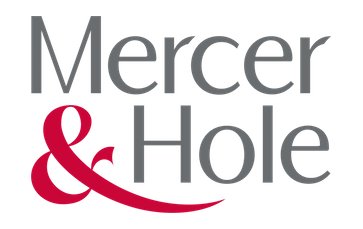Contact: Jacqui Gudgion, Mercer & Hole (London, England)
The last 12 months has been an eventful time in the tax world to say the least. The new Government has introduced some significant changes both from a personal and business perspective, with the new legislation aimed at creating a ‘level playing field’ for those paying tax. Let us take a look at some of the changes that will affect business taxpayers.
Dividend Tax Rates
One of the most unwelcome changes for business owners is the new regime for the taxation of dividends with effect from 6 April 2016 that is designed to simplify the system and provide a new 0% allowance. The changes are:
the tax credit of 10% has been abolished;
a new 0% rate on the first £5,000 of dividend income has been introduced;
new dividend tax rates of 7.5%, 32.5% and 38.1% will apply for basic rate, higher rate and additional rate taxpayers respectively.
Let us reflect on this for a moment though. The tax credit abolition just simplifies the maths – avoids the need to gross up, deduct and end up with the number you first thought of. The new 0% on the first £5,000 sounds like a plus – but this will only be of benefit to those who would have paid tax on dividend income in the first place. For those individuals who were paying tax at basic rate, dividend income produced no further tax liability as the mysterious tax credit took care of that. In addition to this, the £5,000 at 0% is part of the basic rate band, not an addition to it so in fact this measure may increase tax on other income.
We now have a situation where some taxpayers who previously had no further tax liability will have to think about saving for a tax bill (7.5%) on 31 January following the tax year of receipt of the dividend. In fact, they may also fall in to the payment on account regime and have to pay a sum equivalent to 50% of the prior year tax liability on each of the 31 January in the tax year of receipt and 31 July following the year of receipt. Higher rate and additional rate tax payers are also hit by an increase of 7.5% on the rate of tax due.
Business owners looking at profit extraction should consider planning prior to 5 April 2016 if cash flow and distributable reserves allow. In doing so, thought should also be given to the consequential accelerated tax payment date.
Corporation Tax Rates and Reliefs
Corporation tax rates will be falling over the next few years. The current 20% rate will fall to 19% from 1 April 2017 and to 18% from 1 April 2020. There is not much more to be said about this - lower taxes are always welcome and result in higher net profit available for reinvestment and distribution to shareholders.
A surprise announcement in the 2015 Summer Budget was the withdrawal of tax relief on goodwill and intangibles purchased post 7 July 2015. Tax relief on some intangibles survives (know how, patent rights) and relief in relation to existing purchased goodwill remains intact. This will certainly remove some of the tension created between negotiating parties where the purchaser wants to buy assets and secure tax relief on goodwill and the vendor wants to sell shares and claim entrepreneurs’ relief.
Annual Investment Allowance
The new Annual Investment Allowance came in to force from 1 January 2016 for businesses purchasing qualifying equipment. Although originally set to drop from £500,000 to £25,000 this was later revised by the Chancellor to £200,000.
Payrolling benefits
The position on reporting on benefits and expenses is set to change from April 2016. From that date reimbursed business expenses will no longer need to be reported and voluntary payroll of specified benefits is available. In addition, forms P46 (car) will no longer be necessary where the car benefit is being taxed via the payroll.
The benefits that may be taxed through the payroll rather than reported on form P11D are:
cars and fuel;
medical insurance (health and dental) and medical treatment; and
taxable subscriptions.
When you register, you can elect to move some or all employees on to the new system, for some or all of the available benefits. Instead of calculating the taxable benefit at the end of the tax year, you will need to estimate the expected cash equivalent value of the benefit at the beginning of the tax year.
Summary
A variety of changes for business tax payers are coming up and, as ever, spending time with your adviser to review where your business is going and which tax changes will affect you is important. To discuss what the changes will mean for you and your business, please get in touch with me or your usual Mercer & Hole contact.
Jacqui Gudgion
Tax Director
01908 605552
jacquigudgion@mercerhole.co.uk









